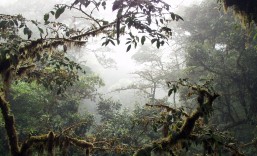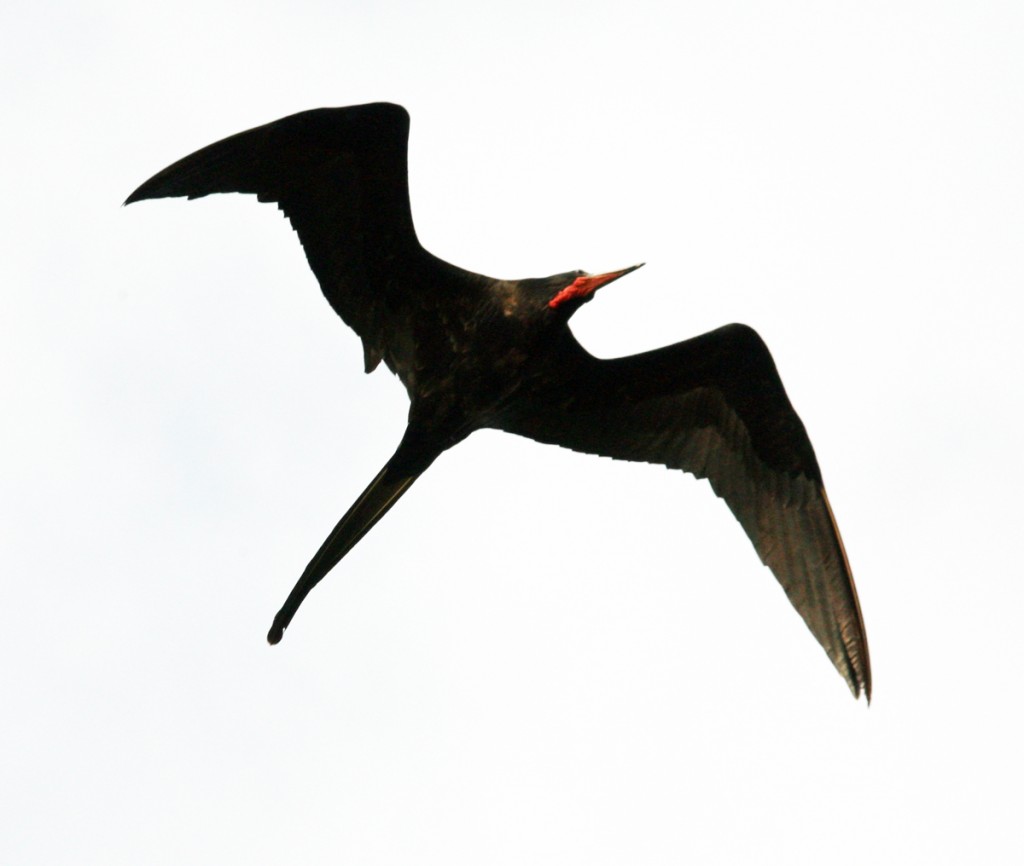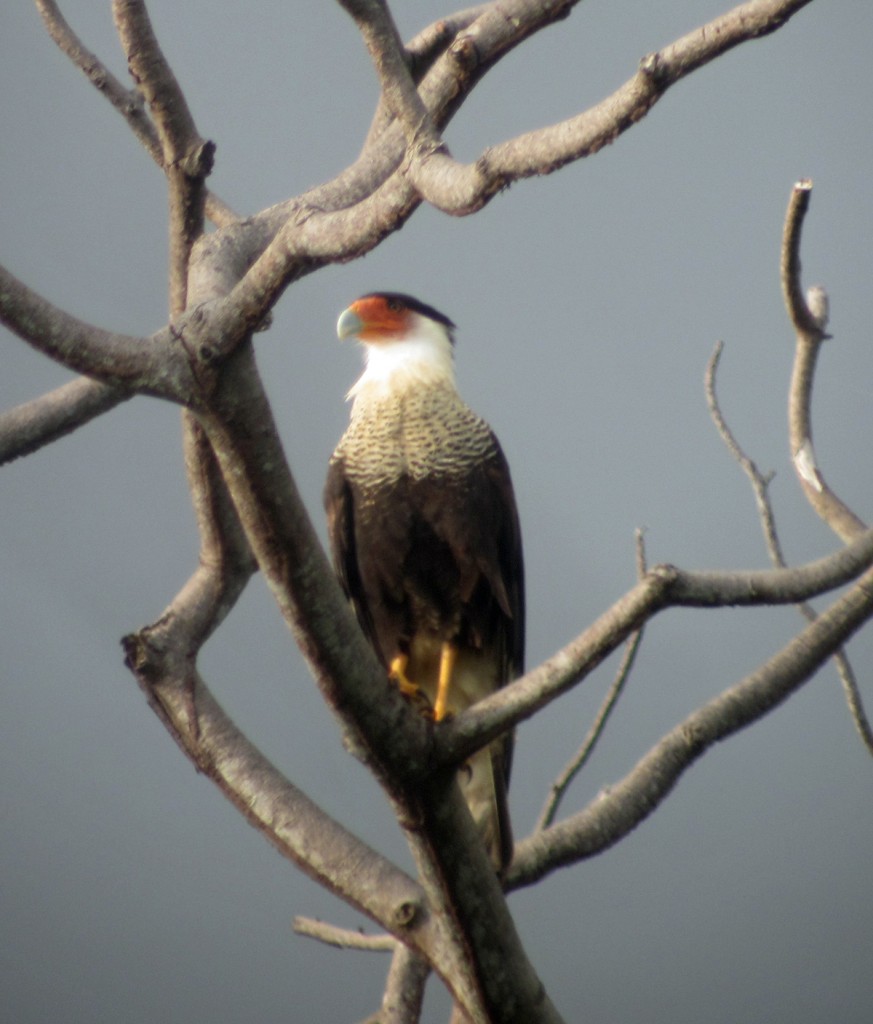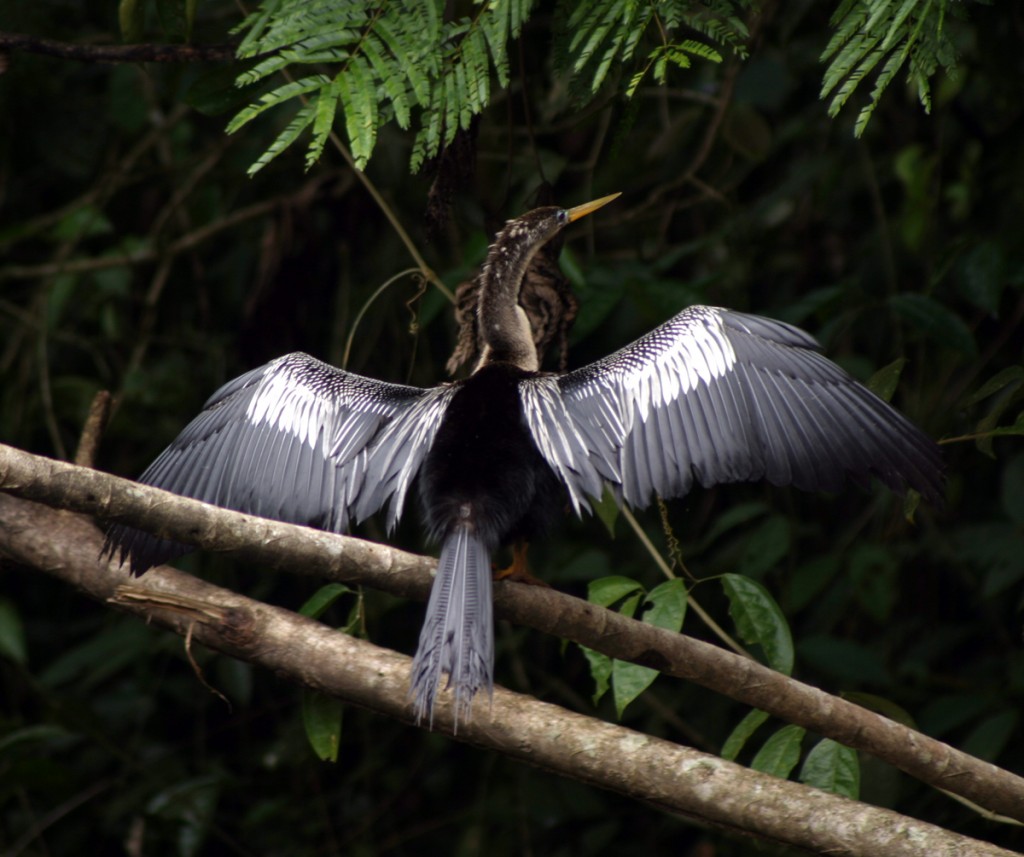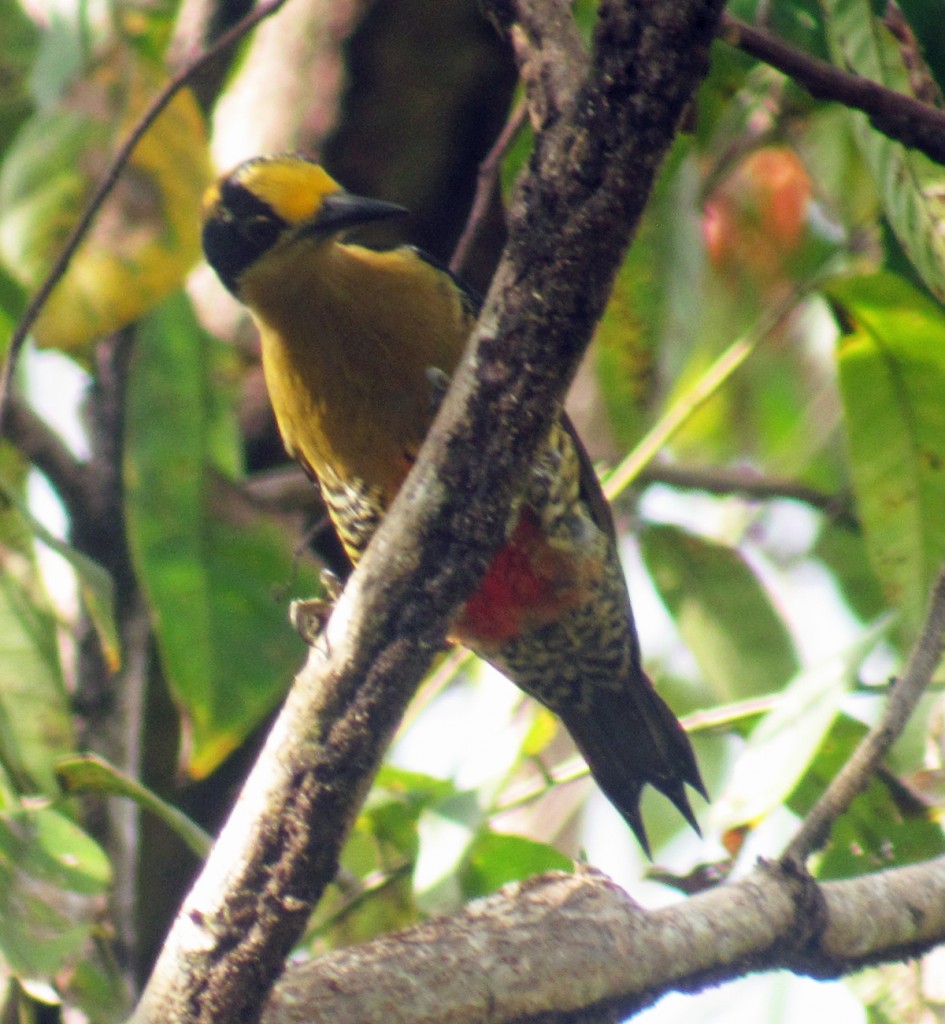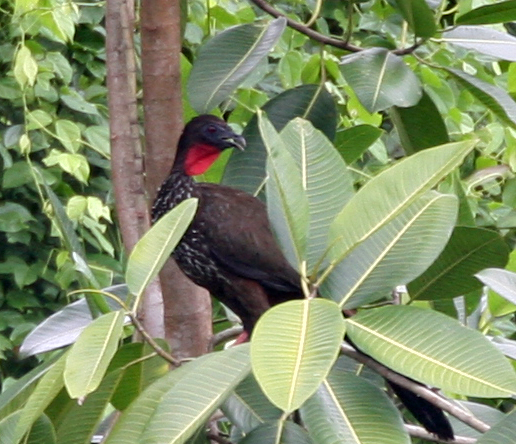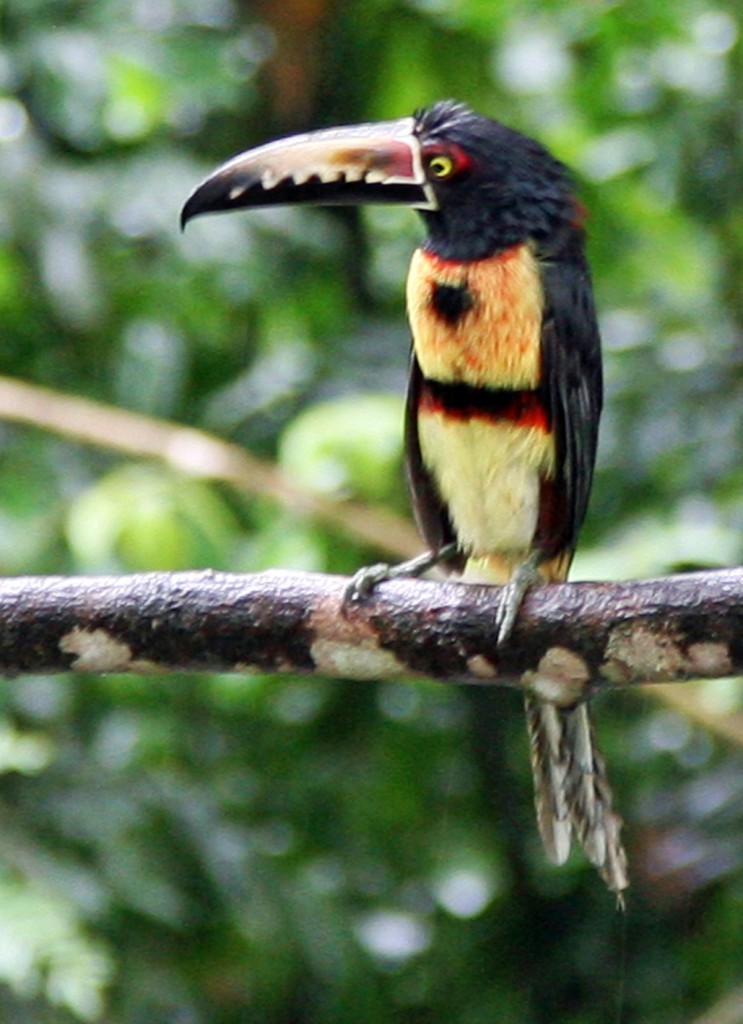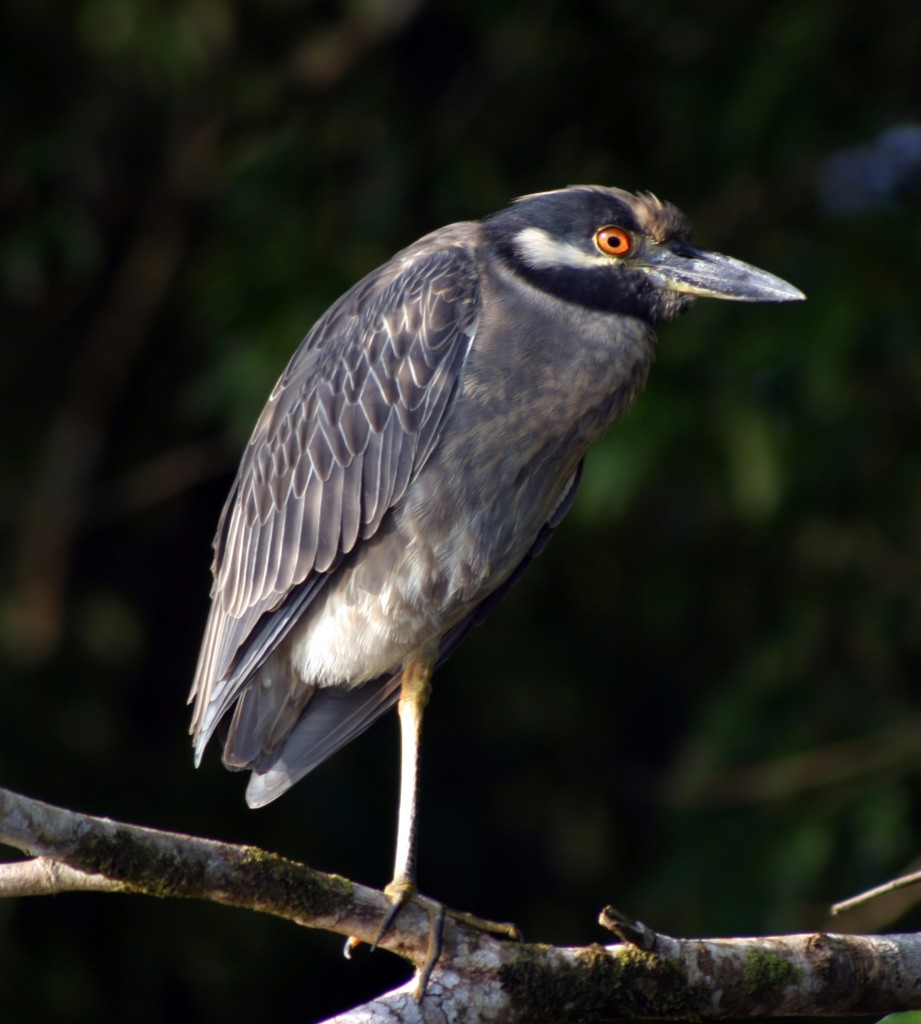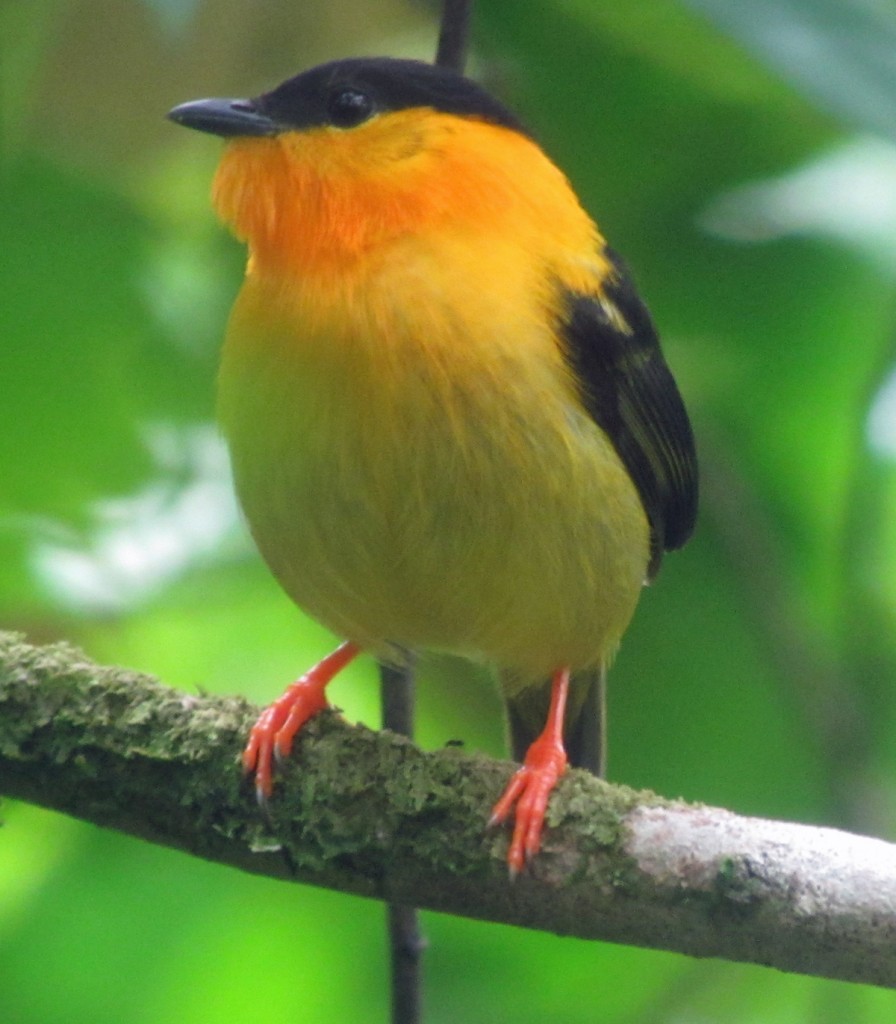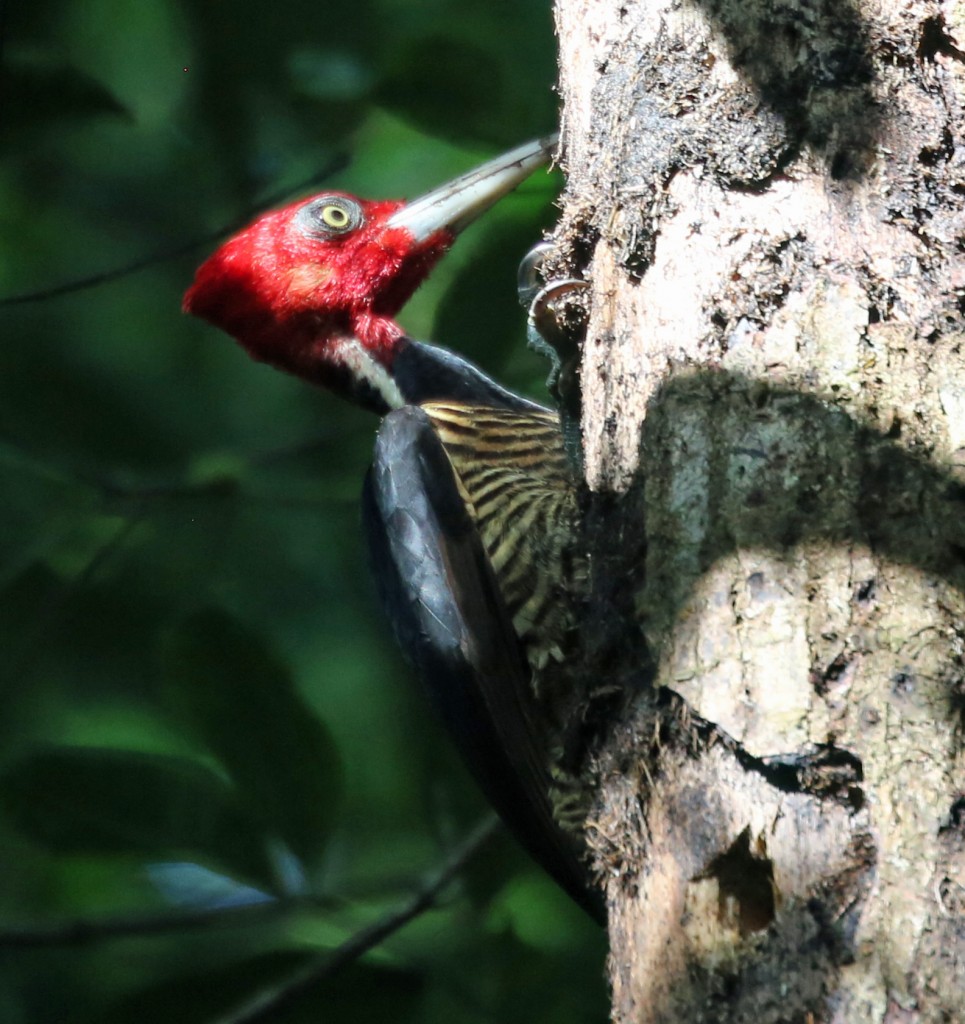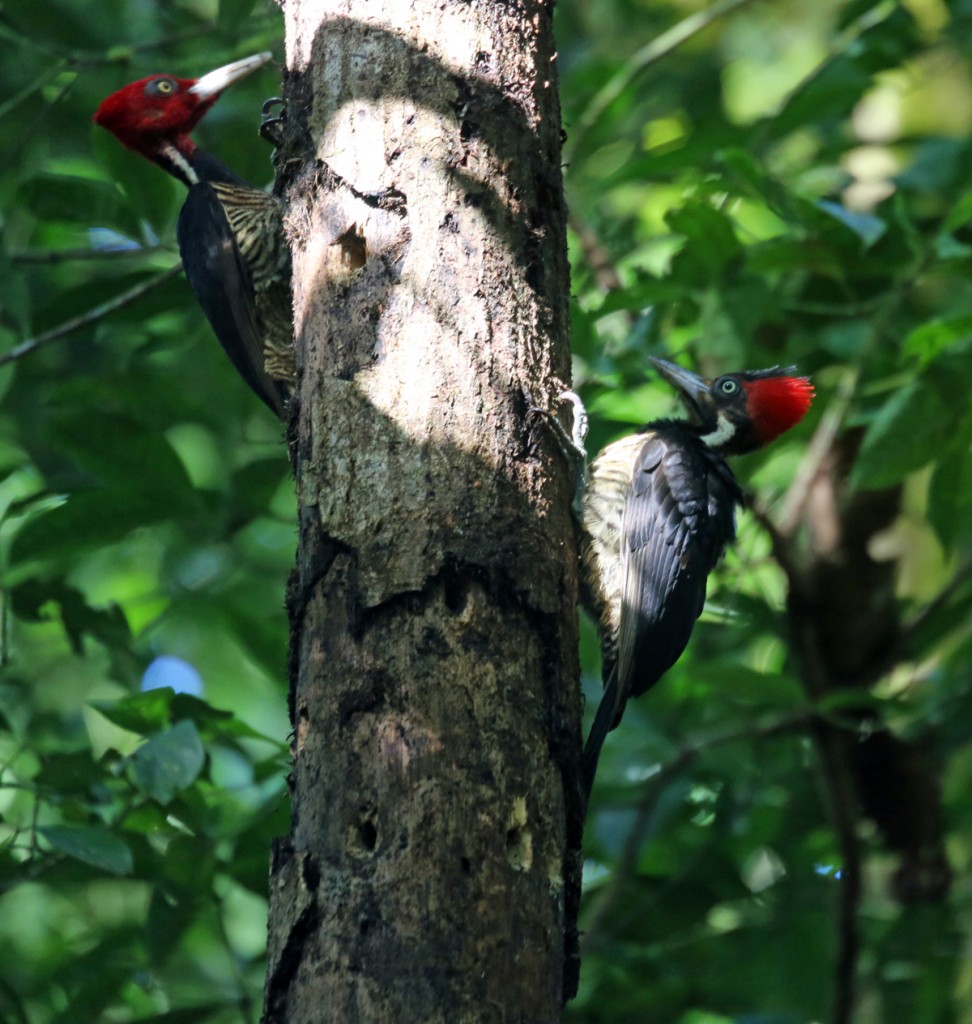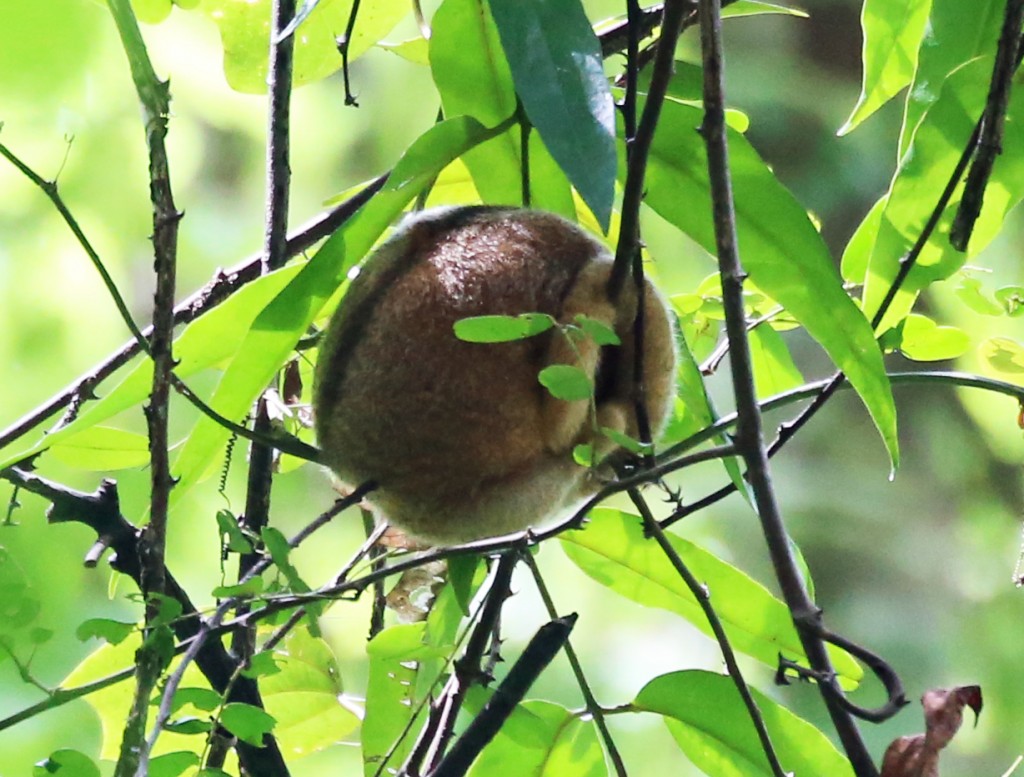
Neither shouts nor whistles would wake this sleepy Silky Anteater.
On the last day of my most recent visit to the Osa Peninsula, I noticed and photographed this fuzzy little ball in a tree not far from Luna Lodge. Without a guide, I wasn’t sure what I was seeing. I knew it wasn’t a sloth as it didn’t have thick matted fur, and lacking a black “vest,” it couldn’t be a Northern Tamandua. Later that day, when I saw expert guide Nito in Puerto Jimenez, I tried to describe the creature, mentioning a black stripe on its back. Nito was confused until I showed him this snapshot, and then his eyes grew wide. “That’s a Silky Anteater,” he exclaimed. Silky Anteaters (Cyclopes didactylus) are the rarest of the three anteater species in Costa Rica, and Nito told me he had only seen it one or two times himself. He was not surprised that my shouts and whistles failed to wake the animal so it would show its face. Strictly nocturnal, Silky Anteaters roll into a ball to sleep away the day. The genus Cyclopes – derived from the Greek words kyklos, meaning “circle”, and opsis, “appearance” – alludes to this distinguishing behavior.
All media is copyright costaricawildlife.net, 2013.
